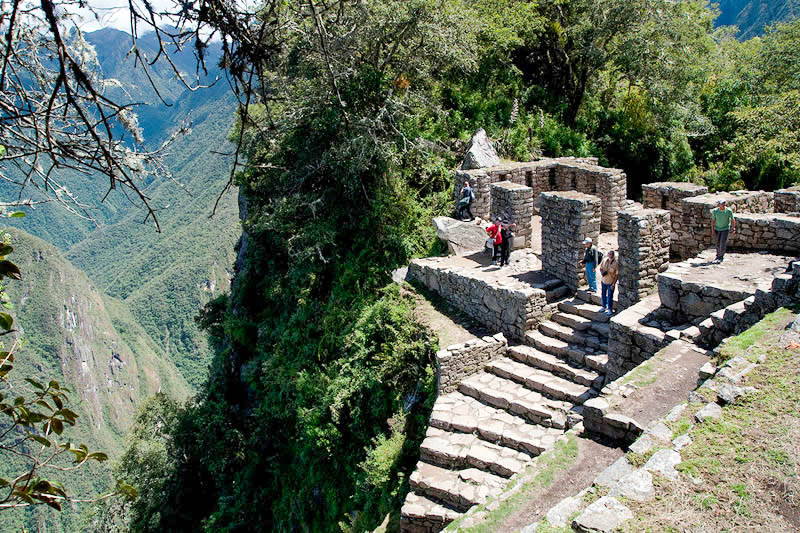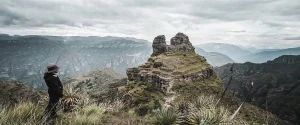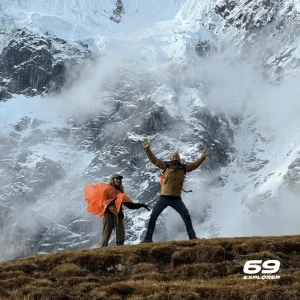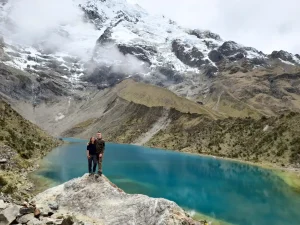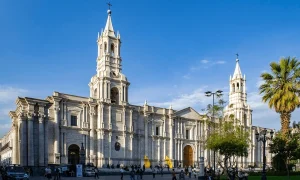Overview
An Intipunku is a “Sun Gate”, it comes from Quechua (Inti: sun, punku: gate). It refers to the stone gates built by the Incas. They were usually located on mountain ridges or strategic passes where the first rays of the sun could shine through during solstices or important ceremonial moments. The most famous Intipunku is located in the Machu Picchu Historic Sanctuary, at the end of the Inca Trail.
For the Incas, The Intipunku was more than a control point. Its strategic orientation with the skies gave the gate deep astronomical and spiritual significance. It was a tool to interpret the solar calendar that guided Inca rituals and agriculture.
History
The Intipunku was built by the Incas in the mid-15th century, during the reign of Pachacútec. It is located on a mountain pass at 2745 meters (9005 ft). When Machu Picchu was brought to international attention in 1911 by Hiram Bingham, Intipunku was also noted as part of the original approach into the citadel from the Inca Trail.
Historians believe that ritual processions took place here. They presume pilgrims and nobles, before entering Machu Picchu, paused here at dawn to perform offerings to the Inti, the Sun God. Historians believe the Sun Gate was the symbolic limit between the everyday world and the sacred space of the citadel.
Getting to The Sun Gate
There are two main ways travelers can reach the Sun Gate of Machu Picchu. They can complete the legendary Inca Trail or follow the official Circuit 1C from the archaeological site.
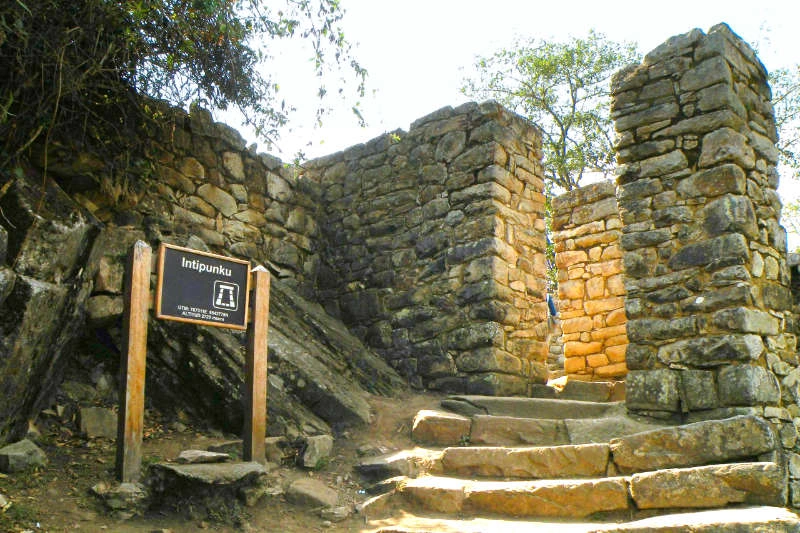
1. Arriving via the Inca Trail
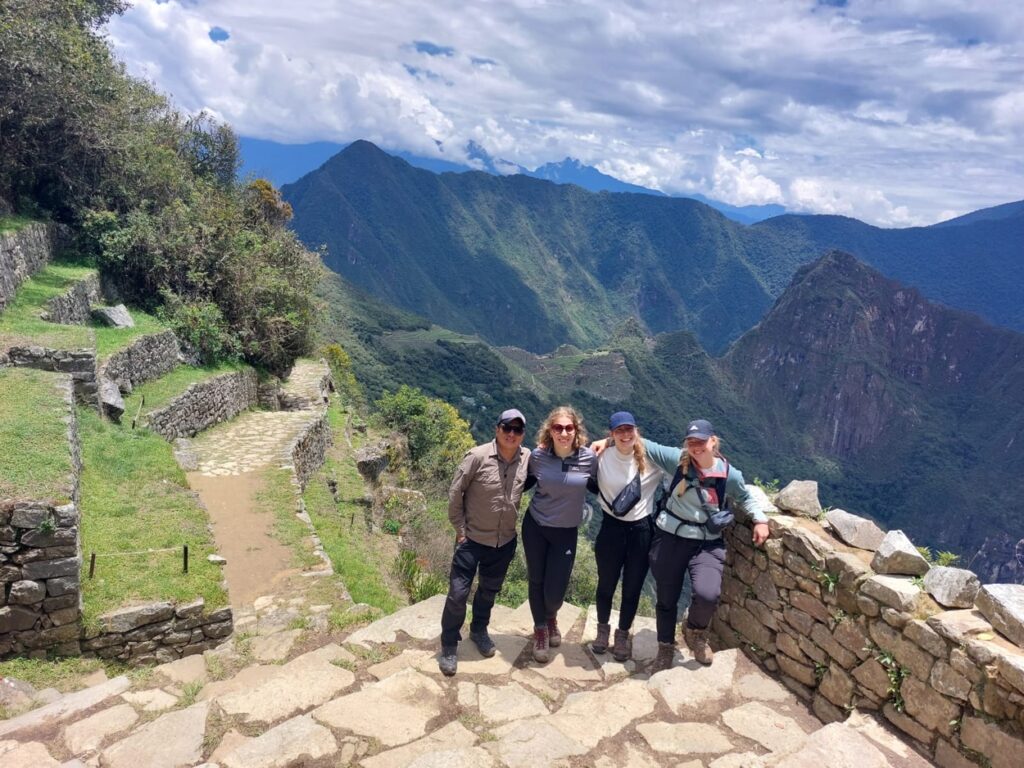
For centuries, Intipunku marked the official entrance to Machu Picchu along the Inca Trail. Today, hikers on the Classic 4-day trek or the Short 2-day version both culminate their journey here.
The highlights of this option: arriving at dawn, passing through the Sun Gate, and witnessing the first panoramic view of Machu Picchu just as the Incas once did.
2. Hiking from Machu Picchu – Circuit 1C
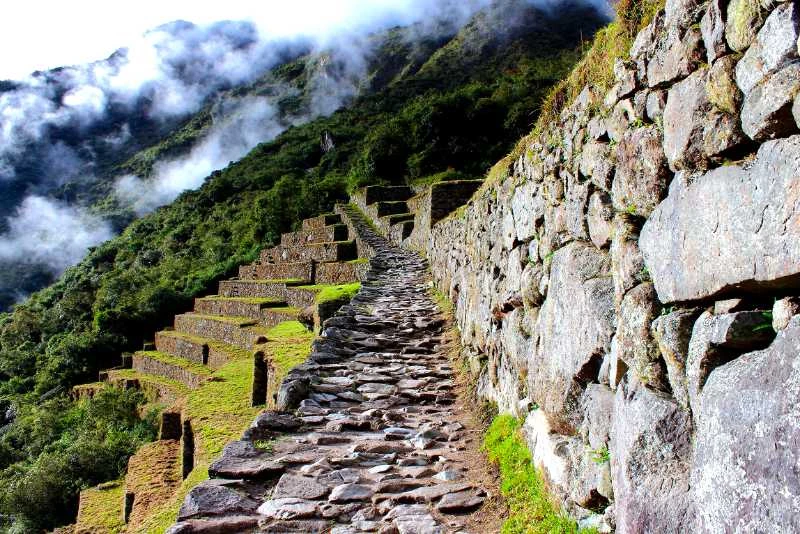
If you are not trekking the Inca Trail, you can still visit Intipunku by following Circuit 1C, one of the official routes inside Machu Picchu. The hike starts near the lower terraces of the site and climbs steadily for about 1.5-2 hours. The path is stone-paved, with stairs and gradual ascents.
The highlights of this option: reaching Intipunku from this route allows you to stand at the same ceremonial site the Incas once did, but without the strenuous effort.
Pro Traveler Tips
Price:
- Access to Intipunku is included with the Machu Picchu + Circuit 1C ticket (approx. $50-65 USD for foreigners).
- With the 2-day Inca Trail, the entrance is part of your trek package (Prices start from $487 USD for a guided tour, which already includes permits, transport, accommodation, meals, trains, shuttles and the Machu Picchu entry).
- With the 4-day Inca Trail, the entrance is part of your trek package (Prices start from $757 USD for a guided tour, which already includes permits, transport, accommodation & camping, meals, trains, porters, camping equipment, shuttles and the Machu Picchu entry).
Difficulty:
- From Machu Picchu (Circuit 1C): Moderate. The hike takes 1.5 to 2 hours uphill, with stone stairs and uneven paths. Suitable for most visitors.
- From the Inca Trail:
- Multi-day trek: Challenging. Requires good conditioning, as it involves long ascents, high altitudes, and camping.
- Short Inca Trail: Moderate with Challenging segments. Requires good conditioning, as it involves long ascents. But is a single day trek, with lighter packing and no camping involved.
What to Pack:
- Comfortable hiking shoes with good grip.
- Hydration: water bottle or water reservoir.
- Sunscreen, hat, and sunglasses.
- Light rain jacket (weather can change quickly).
- Snacks for energy.
- Camera or phone.
Best Time to Visit:
Depending on what is your preference, each season has its perks:
- Dry Season (May-September): Clear skies and better visibility for sunrise views. This is the ideal time to hike but also the busiest season.
- Wet Season (November-March): Trails are greener, but rain and fog are common, which may affect visibility.
FAQS
Not necessarily. If you’re hiking from Machu Picchu on Circuit 1C, the trail is moderate and manageable for anyone with average fitness. The main challenge is the altitude and the steady uphill climb.
On the other hand, the Inca Trail route requires good endurance and preparation since it’s a multi-day trek at high elevations.
Yes. You can visit Intipunku in just one day if you choose Circuit 1C inside Machu Picchu. It takes about 3-4 hours round trip from the citadel.
69 Explorer offers a Full Day Short Trail + Machu Picchu guided tour.
The trail is not technical. No ropes or climbing gear are needed. It’s a well-paved Inca path with stairs and gradual ascents.
Inca Trail tours begin from Cusco with a drive to Ollantaytambo, then a train to Km 82 (Piscacucho) or Km 104 (Chachabamba), depending on whether you’re doing the 4-day or 2-day trek. Both routes culminate at Intipunku before entering Machu Picchu.
Circuit 1C visits start inside Machu Picchu itself. After entering the site, the hike up to Intipunku begins from the lower terraces near the Guardian’s House.

